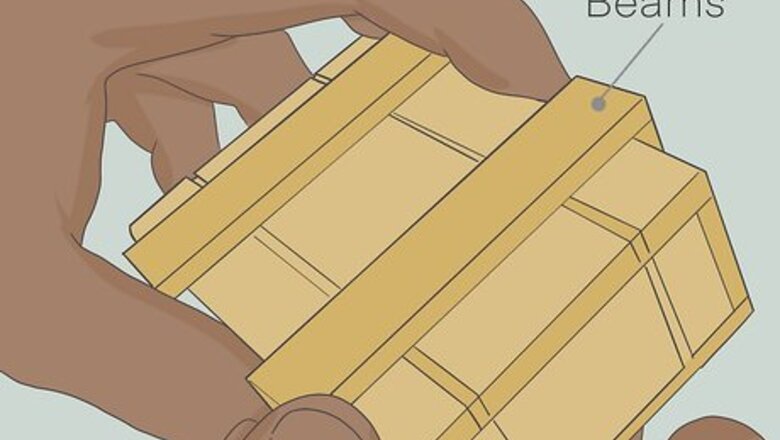
views
Accessing a Wooden Box with Beams
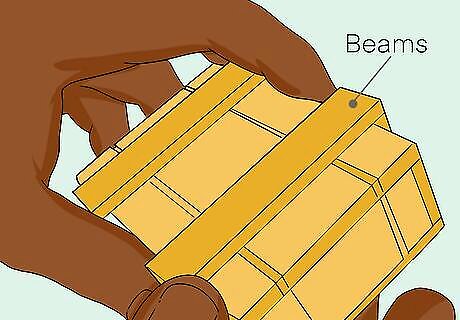
Count how many wooden beams surround your box. Different types of wooden puzzles have a different number of wooden beams circling the outside. If you count 4 beams, your box requires a few extra steps before it can be opened. If you only count 2 beams, then the process is much simpler. Wooden boxes with more beams will generally be larger and wider, since they hold at least 2 hidden compartments.
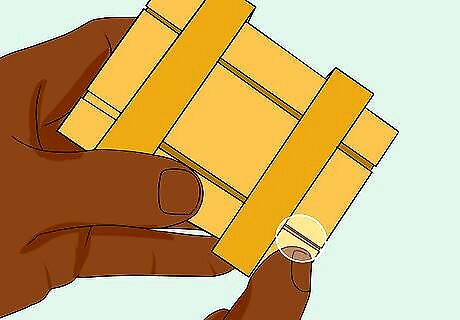
Find the wooden seams along the shorter edges if your box has 2 beams. Search along the small planks of your wooden box to find slight indentations carved into the wood. In total, you’ll find 2 seams—1 on the top edge of the box, and one on the bottom edge. These indentations will be found on the same side. These seams are visible on smaller wooden boxes with only 2 beams, and may not be visible from first glance.
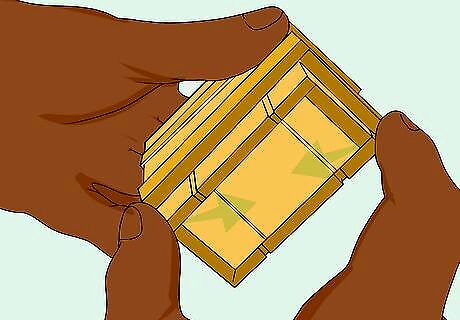
Pinch the opposite corners next to the seams. Take your thumb and forefinger and position them along the corners that neighbor the wooden seams. They should be diagonally opposite from one another. Apply a little bit of force as you pinch, so that you’ll be ready to pull out the hidden compartment. Although they’re on different corners, your thumb and forefinger should be on the same side of the box.
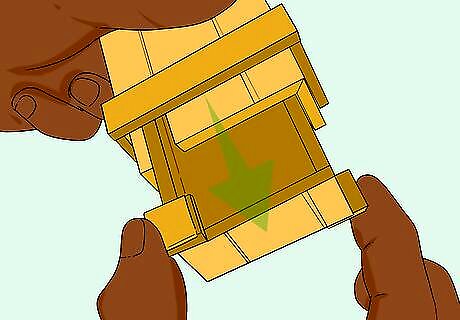
Pull forward until the storage compartment slides out. Use a small amount of force to pull out the hidden drawer. Wiggle both corners if the compartment is difficult to remove. Once you can see the hidden drawer, you’ve solved the puzzle box!
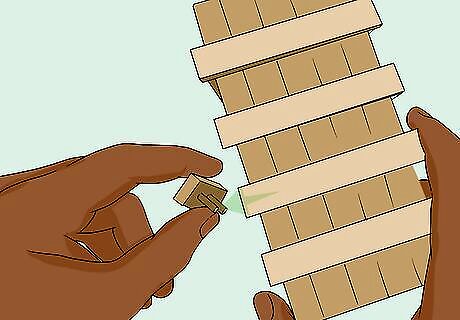
Remove a small, vertical piece of wood if your box has 4 horizontal beams. Examine the vertical pieces along the sides of the box until you find a piece that can be loosened. These pieces are shorter than the longer stretches of beam that go across the box horizontally. One of these vertical pieces will be slightly looser than the rest. If none of the vertical wooden pieces seem especially loose, try pressing the side pieces sequentially around the box. This helps you keep track of which pieces you’ve tested and which ones you haven’t.
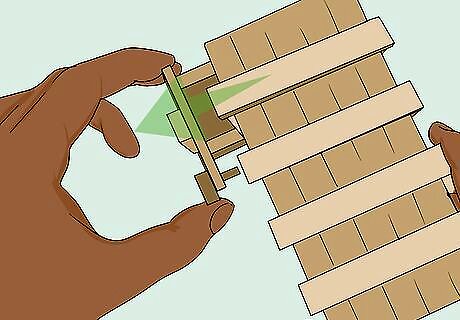
Wiggle the remaining wooden pieces to reveal the first drawer. Pinch and remove the 2 wooden pieces directly adjacent to the single piece you just removed. Use a rocking, jiggling motion to pull out the first hidden compartment, which looks like a small, narrow drawer. Don’t be discouraged if you don’t find anything in this compartment—there’s still another hidden drawer for you to find!

Reach into the open space and push down on the remaining wood. Take 2 fingers and feel along the inside of the box for a piece of wood that’s sticking out. You can see this extra piece if you peer into the box. Push this piece outwards, which frees the second hidden compartment.
Solving a Cuban Puzzle Box
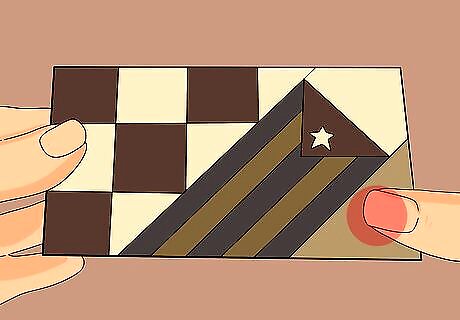
Place your forefinger along the bottom edge of the box. Box styles vary, but there should be a distinct triangle or square that’s next to one of the box’s bottom corners. Secure the tip of your forefinger onto the center of this piece, ensuring that you have a firm grip. Cuban puzzle boxes can generally be distinguished by a wooden Cuban flag that decorates the box’s surface. If your box doesn’t have this kind of decoration, then it might not be a Cuban puzzle box.
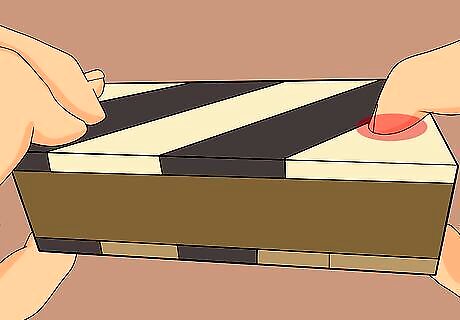
Rest your thumb on the top, opposite side of the box. Find a distinct triangle or square embedded along the top edge of your box. Position the tip of your thumb so that it rests securely on this piece of the box. Use both fingers to maintain a firm, steady grip on each corner.
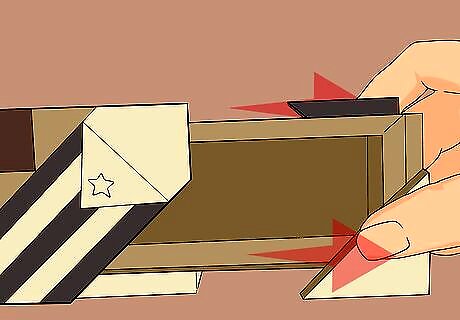
Squeeze both fingers and pull to reveal the compartment. Keep your grip steady and pull on each corner. With enough pressure, you’ll tug the secret compartment out of the box. Don’t be discouraged if you can’t pull it out on the first try—just keep readjusting your fingers and trying again. If resting your forefinger and thumb on the edge of the box doesn’t work, consider adjusting your grip so that your fingertips lie on the surface of the colored squares instead of on the edge.
Figuring out a Dovetail Box
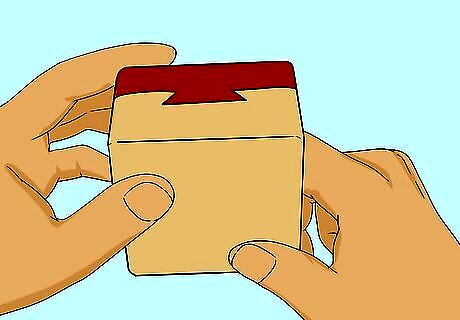
Flip the box upside down so the dovetail is facing upward. Hold your box in 1 hand and turn it over so that the box is upside-down. If it helps, imagine that the dovetail is part of an hourglass. Before you can solve the puzzle, you have to flip that hourglass over. These boxes get their name from the distinctive cuts in the wood that connect both halves together. A normal dovetail box partially resembles a bird’s tail, so you want that tail to be flipped upside down before continuing with the opening process.
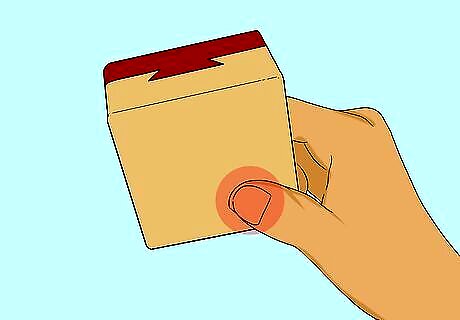
Hold the bottom right corner of the box securely. Use the thumb and forefinger of your right hand to hold the lower right corner of the dovetail box. Grip the box securely, as you will be hitting it against your other hand momentarily. Before you continue, make sure that the box is still in its flipped position.
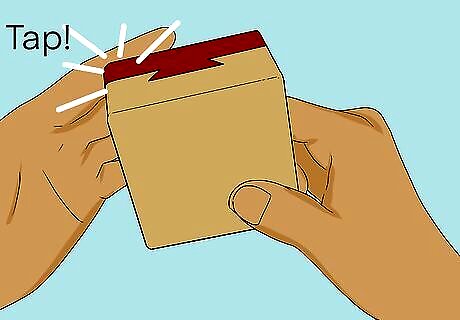
Hit the upper left corner of the box against your opposite hand. Pretend you’re high-fiving your other hand with the box, and slap it down on the open surface of your left hand. You should hear a popping noise or some kind of movement within the box after you do this. Both halves of the dovetail box are held together with 2 strong magnets, which are further secured in place by a little ball. When you slap the box onto your opposite hand, you’re moving the ball away from its initial position, allowing the puzzle box to unlock. You may have to slap the box more than once before the ball loosens.
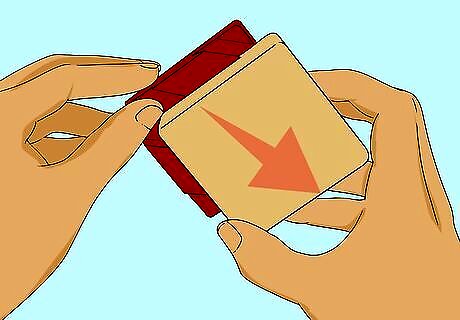
Slide the pieces apart at a 45-degree angle. Place the dovetail box back onto a flat surface and rotate it so that it resembles a diamond. Use your right hand to hold 2 of the box’s top corners, which allows you to pull the halves apart at a 45-degree angle. The upper half of the box slides along a track that’s carved diagonally across the bottom half of the box. The dovetail box is better used as a game than as a storage container.
Solving a Japanese Puzzle Box
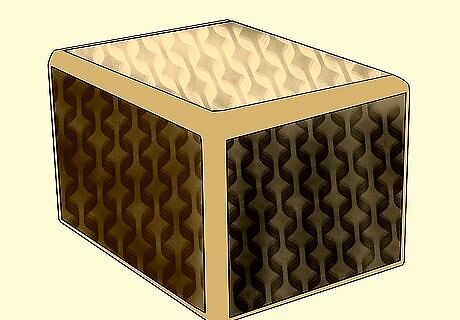
Inspect the puzzle box to assess the level of difficulty. Japanese puzzle boxes, also known as Himitsu Bako, have different designs and styles, the hidden space is usually a large wooden compartment within the box. There are generally no drawers involved—instead, you focus on an elaborate series of adjustments on the outside of the box. Some boxes come with instructions. If you want to double-check the structure of your box, consider taking a look at the instructions before you start. If you know what kind of box you’ll be getting ahead of time, consider getting a simple one that can be opened in 10 moves
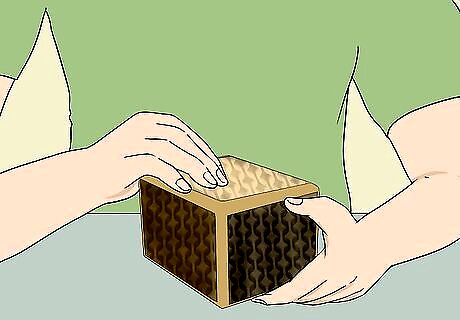
Be patient when you start the puzzle-solving process. If your box requires a lot of unlocking motions to open it, it could take several hours or days before you finally unlock the box. Depending on the type of box you have, you might have to do up to 100 unlocking motions to successfully open the puzzle box.
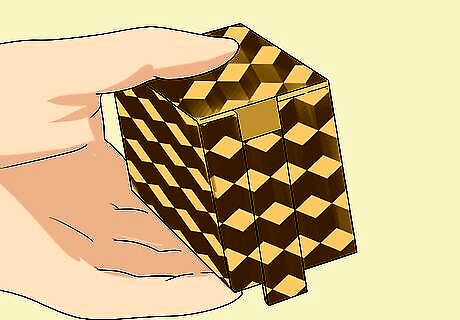
Try sliding a side panel to begin the puzzle. Check the shorter sides of the box to see if you can move any panels. One of the outermost panels will slide so that you can begin the process of unlocking the box.
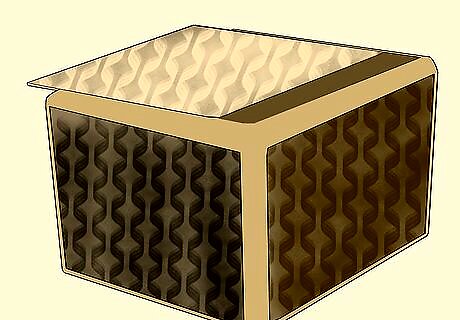
Keep sliding and moving pieces to complete the box. Move the panels in alternating motions—for instance, push the top panel to the far left while pushing the next panel to the far right. Keep sliding and working your way around the box until you manage to open it! Keep in mind that the unlocking motions must be done in the correct order every time to open the box.


















Comments
0 comment